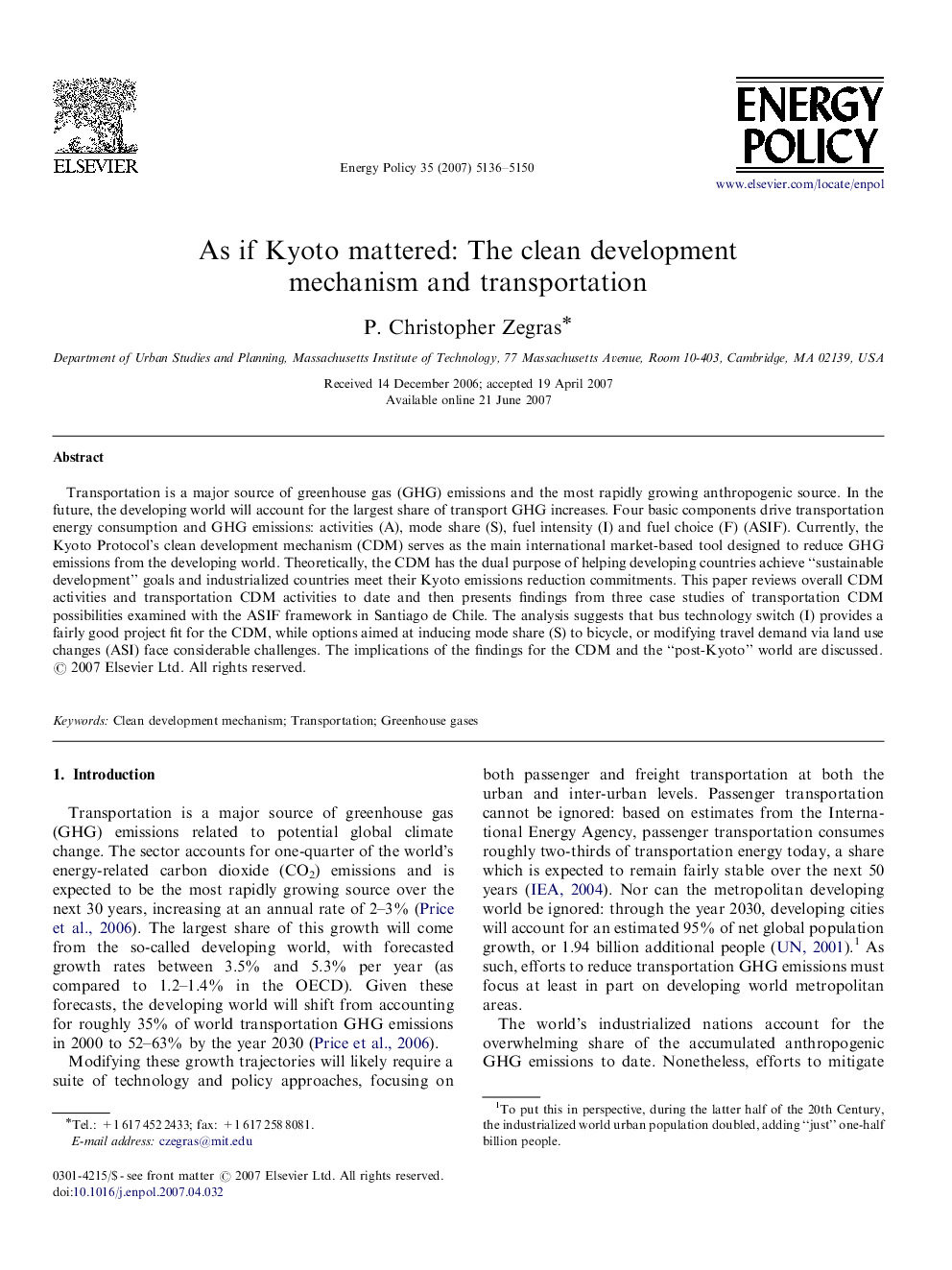| Article ID | Journal | Published Year | Pages | File Type |
|---|---|---|---|---|
| 997214 | Energy Policy | 2007 | 15 Pages |
Abstract
Transportation is a major source of greenhouse gas (GHG) emissions and the most rapidly growing anthropogenic source. In the future, the developing world will account for the largest share of transport GHG increases. Four basic components drive transportation energy consumption and GHG emissions: activities (A), mode share (S), fuel intensity (I) and fuel choice (F) (ASIF). Currently, the Kyoto Protocol's clean development mechanism (CDM) serves as the main international market-based tool designed to reduce GHG emissions from the developing world. Theoretically, the CDM has the dual purpose of helping developing countries achieve “sustainable development” goals and industrialized countries meet their Kyoto emissions reduction commitments. This paper reviews overall CDM activities and transportation CDM activities to date and then presents findings from three case studies of transportation CDM possibilities examined with the ASIF framework in Santiago de Chile. The analysis suggests that bus technology switch (I) provides a fairly good project fit for the CDM, while options aimed at inducing mode share (S) to bicycle, or modifying travel demand via land use changes (ASI) face considerable challenges. The implications of the findings for the CDM and the “post-Kyoto” world are discussed.
Related Topics
Physical Sciences and Engineering
Energy
Energy Engineering and Power Technology
Authors
P. Christopher Zegras,
